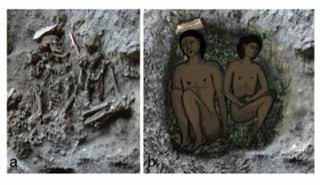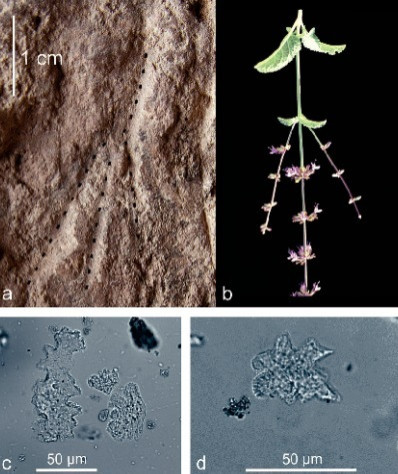Oldest Grave Flowers Discovered In Israel, Ancient Plot Lined With Plants Before Burial [PHOTOS]


Ancient burial plots containing imprints of nearly 14,000-year-old flowers has been discovered in Israel.
Deemed the oldest grave flowers in existence, scented flowers like mint and sage were used in gravesites in a cave on Israel’s Mount Carmel. The findings, published in the journal Proceedings of the National Academy of Sciences, point to ancient burial practices of the Natufian society, one of the earliest cultures where humans lived in permanent settlements.
This "is the oldest example of putting flowers and fresh plants in the grave before burying the dead," Dani Nadel, study co-author and archaeologist at the University of Haifa in Israel, told LiveScience. Scientists found the flowers in an archeological site that was previously unearthed nearly 50 years ago.
In 2004, Nadel and his colleagues started a more thorough investigation of the cave and discovered 29 skeletons in four different burial sites that had impressions of plant and flower stems. Under an electronic microscope, the scientists found tiny phytoliths, or microscopic crystals made by plants. The team identified stems of sage, mint and figwort that provides “the earliest direct evidence now known for such preparation and decoration of graves,” the study says.
The graves belonged to adults from the Natufian society, a Middle Eastern civilization that lived between 12,000 and 9600 B.C. and is believed to be one of the earliest societies to shift from nomadic to sedentary. The Natufians are also thought to be the first to create graveyards, Nadel told National Geographic.
Nadel and his team found that the flowers were placed on the bottom of the graves before the bodies were buried. Primitive plaster was used to keep them in place. Nadel added that the Natufians had reasons for choosing certain flowers to honor their dead.
“There are hundreds of flowers on Mount Carmel during the spring, but only a small group provide very strong fragrances. It’s impossible that the Natufians didn’t recognize the smell,” Nadel told the Jewish Press, explaining that the Natufians likely chose flowers based on their scent.
Nadel adds that the flowers shed light on other aspects of Natufian burial ceremonies. “They didn’t just place the bodies inside the graves and leave,” he said. “We have to envision a colorful ceremony that maybe included dancing, singing and eating. They may have hunted a few animals and had a big meal around the graves and then threw bones or meat inside.”
© Copyright IBTimes 2024. All rights reserved.






















